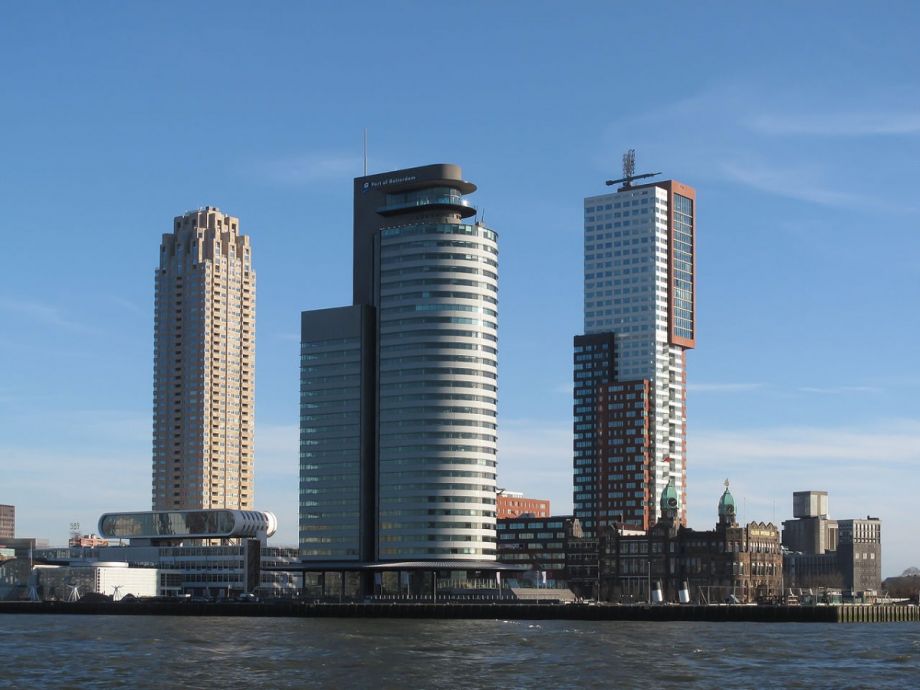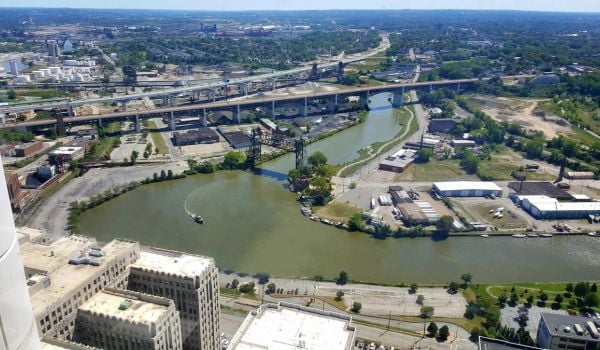The Dutch evening news rarely focuses on crimes like rape, murder or theft. Still, these things do happen. In Rotterdam, they mostly happen south of the River Maas. I’ve lived in Rotterdam for almost seven years. In that time, I’ve travelled further south than Kop van Zuid, the culture-heavy waterfront area, less than 15 times. I’ve visited some artist friends who built a greenhouse on unused space outside their home; I’ve stopped by a couple of pop-up markets. When I was studying architecture I travelled to Zuid to check out social housing projects like Carel Weber’s (in)famous Paperclip (De peperklip). But in general, for me and for many people who live on the northern side of the River Maas, Rotterdam Zuid might as well be another city — a city where you wouldn’t want to get a flat bike tire in the middle of the night.
The odd thing is, every time I do venture into Zuid, I’m pleasantly surprised by how quaint, hip and loved this area feels. Sure, Zuid still has its bad corners, but for the most part it’s experiencing a kind of urban renaissance. This is no coincidence.
Rotterdam grew on either side of the River Maas in completely different ways. Historically, the north bank held the city center and mixed residential areas. The south bank was devoted to port industries and blue-collar workers’ housing, and enjoyed few public amenities. Until the late 1980s, Zuid developed almost autonomously, with growing concentrations of poverty and crime. In 1996, the Erasmus Bridge was constructed, physically linking the two sides, with the clear intention of socially re-joining the city as well. Nearly two decades later, however, Zuid remains a separate entity.
A recent report titled The State of Rotterdam 2013 (Staat van Rotterdam 2013) makes a clear distinction between crime-related statistics from Zuid and numbers from the rest of the city — again reinforcing the “separateness” of this half of the city. According to the research, nine percent of residents in Zuid often feel unsafe in their own neighborhoods. For the entire city of Rotterdam, that figure is closer to five percent. In Zuid, nearly 35 percent of business owners report sometimes feeling unsafe, while in the rest of Rotterdam, that figure is more than ten points lower, at 23 percent. In 2013, the safety index rating (veijligsheidindex) for Rotterdam was a respectable 7.2 out of 10 — up from 5.6 when the program was begun in 2001. For Zuid, the rating was 6.4.
Statistics like this were a driving factor behind the initiation of the National Program Rotterdam Zuid (NPRZ). The NPRZ follows up on the “Pact op Zuid” improvement program that was started in 2006. Led by the municipality in collaboration with private partners, Pact op Zuid was responsible for a number of projects in Zuid like the Creative Factory, 169 Klushuizen as well as sports fields and school playgrounds. Eventually, however, a fundamental difference of opinions within the Pact op Zuid team began to slow the redevelopment process.
In early 2011 Wim Deetman and Jan Mans published the report “Quality Leap Zuid” (Kwaliteitssprong Zuid) that concluded that a national program was necessary to address Rotterdam Zuid because of the unprecedented scale and intensity of the area’s socio-economic problems. In fact, they reported that Zuid was facing “un-Dutch” challenges, and that it would require the sustained, combined efforts of the municipality, the national government, local residents, housing associations, businesses, schools and local partners to realize any breakthroughs in Rotterdam Zuid.
In September 2011, 17 public and private partners signed the project plan Zuid Works (Zuid Werkt) and, beginning in July 2012, put their promises into practice. This team became the core of the NPRZ and currently focuses on three main areas: better education and training, reducing unemployment and improving the living environment. The hope is that together, these improvements can have a trickle-down effect, raising the standard of living and reducing crime across the seven focus districts in Zuid.
For the last two years, the NPRZ has been gathering momentum. Most projects are being implemented on schedule. “Education,” the first pillar of the NPRZ program, addresses the quality of schools and training programs throughout Zuid. Schools involved in the program have extended teaching hours and 18 of the 34 schools in the focus districts now offer children six to ten hours of extra lessons per week. Five “district teams” have also been dispersed across Zuid to provide practical help and hands-on support to vulnerable families — sometimes literally around the kitchen table.
Under the “Employment” pillar, the focus groups are welfare recipients and high school graduates. Last year, implementation of a new program called Career Start Guarantees (courses with a job guarantee after completion) proved difficult. This year, the NPRZ team members hope to make a number of agreements with private companies to make this attractive plan a reality. Another program within the NPRZ helps match unemployed residents with suitable work, reducing the number of welfare-dependents and preventing benefits fraud.
The third program pillar, “Living environment” is concerned with both public and private space. In autumn 2012, the government, community and local corporations signed a voluntary agreement to invest 120 million euros in large housing projects. While Zuid currently has 35,000 homes that need serious renovation, the project will begin with 4,750 homes within the focus districts. Over the next three years, 494 million euros will be invested in renovation, demolition and new construction throughout Zuid. And, based on reactions from the Citizens’ Summit 2013, local residents support these NPRZ ambitions.
The thing about Zuid is, the potential in this area is almost incalculable. Artists are attracted by the low rents and unused spaces, while creative entrepreneurs have started some of the best coffee shops and hand-crafted goods stores in the city. The area’s ethnic diversity fosters a huge variation in restaurants and shops. The former industrial spaces have a punk aesthetic that is almost impossible to find elsewhere in the city. The social challenges, however, mean that these urban pioneers must be brave. Most inhabitants leave Zuid as soon as their financial circumstances make it feasible, leaving the area marooned in poverty. For the NPRZ to have any effect at all, local residents will need to invest as much as the government. Only their investment will be in themselves, their neighborhoods and their children’s educations. The rest of Rotterdam also has an investment to make: reconnecting Zuid to the northern half of the city. The result of this combined effort could be a city that offers the best of all worlds: ethnic, economic and social diversity without the crime and fear that currently plagues nearly one-third of Rotterdam’s citizens. Not a bad deal, if we are willing to make it.

















